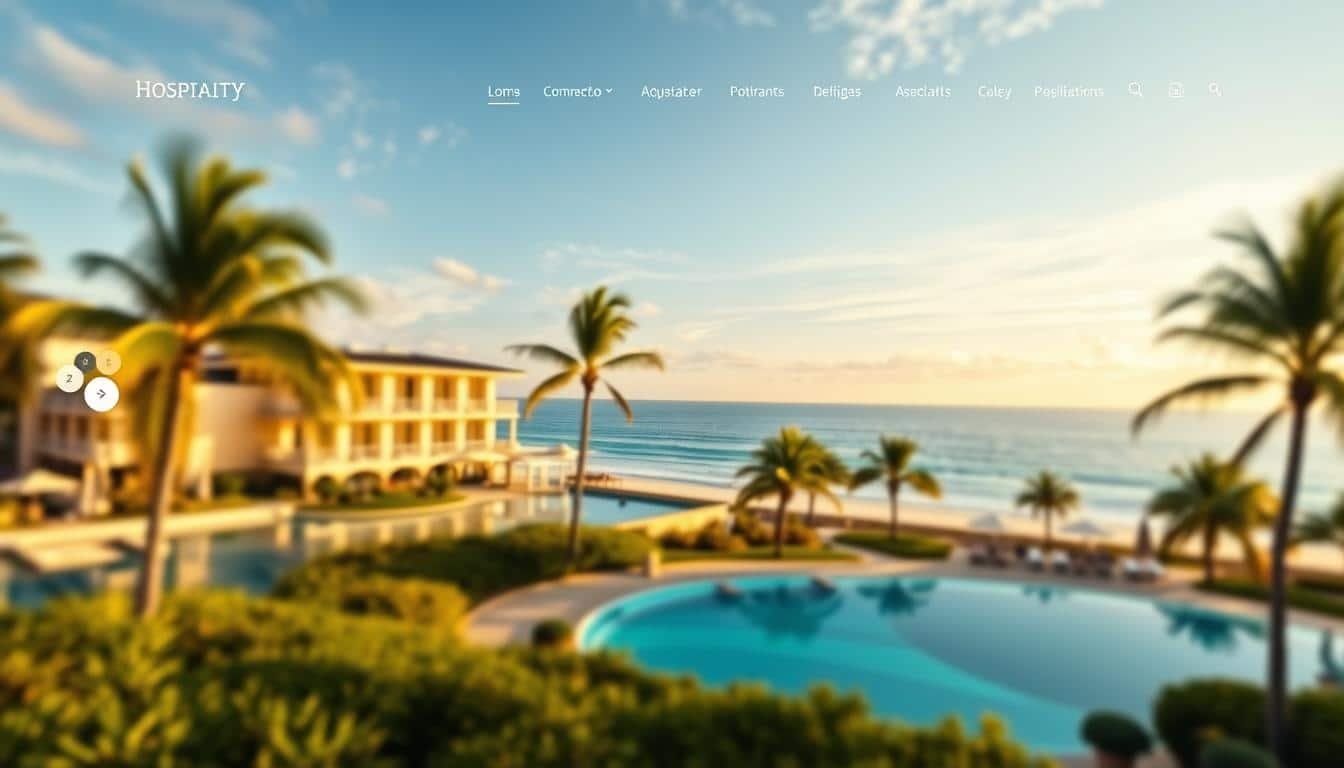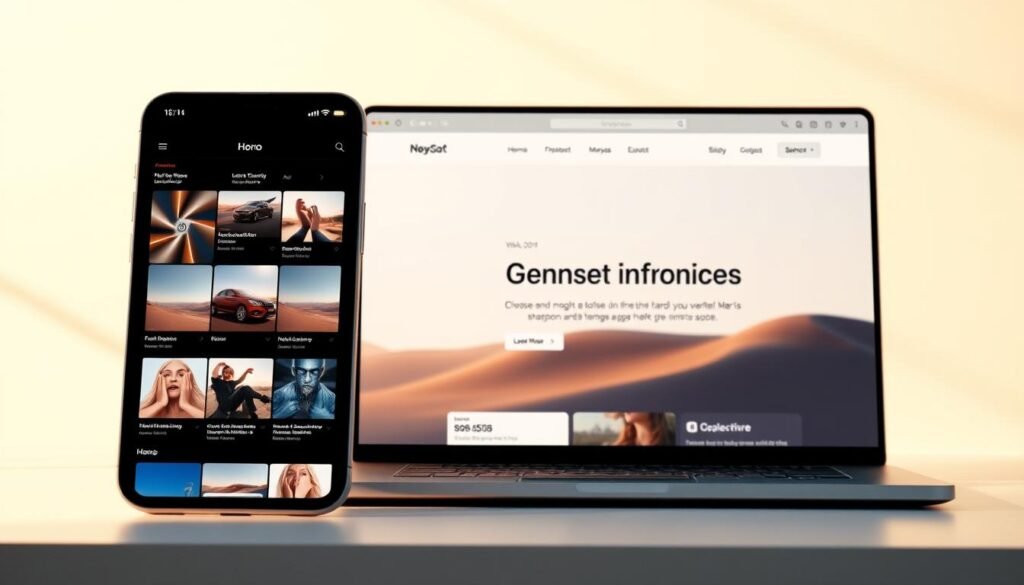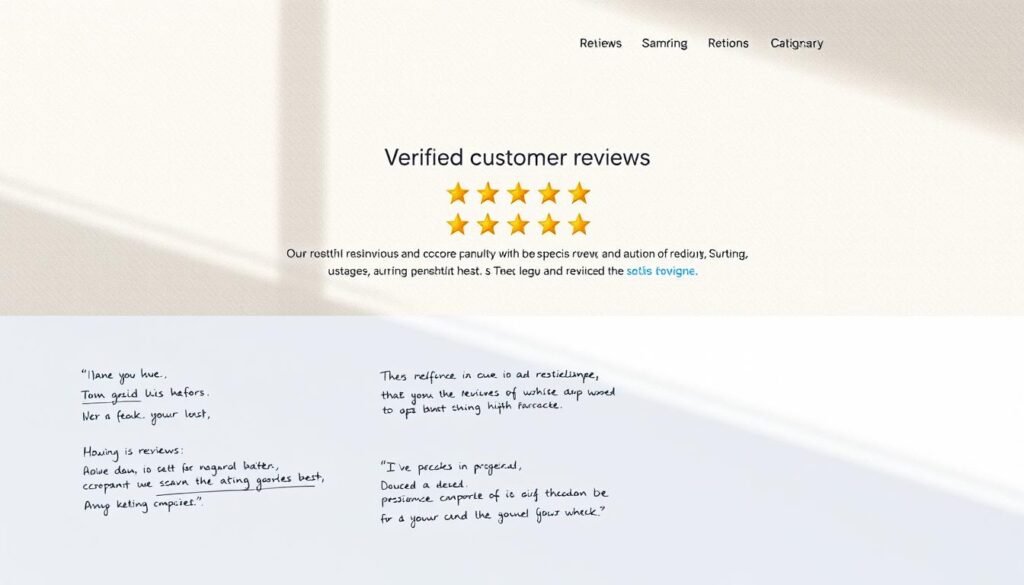HOME / SINGLE POST

Up to 83% of tour pages lack complete information — a gap that turns interest into abandonment within seconds.
We know UK travellers value speed and clarity. When the booking search is hidden or slow, people leave. Slow loading, cluttered navigation and scarce tour details erode trust in your brand.
In this article we set out practical, evidence-based practices to fix those problems. We focus on clear homepage booking modules, industry filters, fast mobile performance and simple layout choices that guide users from search to booking.
Expect friendly, actionable advice you can test quickly — from calendars and maps to verified reviews and transparent pricing. Our aim is to reduce friction, boost engagement and help your site earn bookings without heavy discounting.
British travellers expect quick answers the moment they land on a page. They come with clear needs: a fast search, dates and prices visible, and enough information to judge fit at a glance. Slow or cluttered pages break trust and stop the journey before it begins.
Most users land ready to search. If the booking module sits below the fold, they hesitate. That delay raises frustration and kills momentum.
Users want clear labels, visible inputs and quick feedback — so the first interaction feels effortless and reliable.
Missing prices, sparse details or fiddly navigation make users click away. Slow pages and unclear totals reduce conversions and cut repeat visits.
We measure these gaps by tracking drop points along the journey and fixing the exact moments where trust slips.
| Friction source | Immediate effect | Business impact |
|---|---|---|
| Hidden search module | Delay in first action | Lower conversion rate |
| Missing price or map | User uncertainty | Higher abandonment |
| Slow, heavy page | Early exits on mobile | Lost loyalty and fewer repeat visits |
Users decide in seconds; our aim is to present the right cues at the right moment.
We map the journey from discovery to action and define a clear process that surfaces the right content and information when users need it.
Example: data shows 30% hide the search, 40% lack industry filters and up to 83% omit full tour details. Fixing these gaps lifts conversions and builds brand trust.
Make the booking box the star of the homepage so visitors can start planning straight away. Around 30% of accommodation sites don’t make the booking search the primary content, and that hides the key prompt users expect: “Where are you going and when?”
Place the search feature at the top with generous sizing, strong contrast and bold borders so it never blends into a hero image.
We favour clear labels and helpers — a flexible dates toggle, visible examples and a single, strong CTA to prompt action.
The booking module should sit above the fold on every page. If it drops below, users often hunt in navigation or abandon the task.
Keep it persistent or easily reachable as users scroll so they can refine plans without losing context.
Default the cursor to destination and enable type‑ahead — useful for repeat hotels and popular UK cities.
Use large tap targets, intuitive date pickers and matching keyboards on mobile. A one‑line condensed search can expand on tap to reveal full options.
| Issue | Fix | Benefit |
|---|---|---|
| Hidden search | Top placement, bold styling | Faster booking starts |
| Small inputs | Large tap targets, type‑ahead | Fewer errors on mobile |
| Lost context | Persistent search bar | Easy refinements, higher conversions |
Well‑chosen filters help travellers remove guesswork and reach relevant results faster. Data shows 40% of sites omit key industry filters, and that gap makes users abandon searches when they can’t narrow results effectively.
We recommend a focused set of options that mirror real booking choices. This reduces clicks and speeds decisions.
Key features: star rating, bed size, amenities such as parking and air conditioning, and bedroom/bathroom counts. These let users refine hotel lists without opening each listing.
Essential options: duration, difficulty, family‑friendly, inclusions and start time. Filters like these cut wasted exploration and surface suitable experiences quickly.
Use visible chips, multi‑select and a clear applied‑filters bar with an easy Reset. Keep the most popular filters expanded and collapse the rest.
| Filter group | Why it matters | UX pattern |
|---|---|---|
| Hotel star & bed size | Matches quality and comfort expectations | Checkboxes + counts |
| Amenities (parking, AC) | Solves practical needs on arrival | Collapsible lists, popular expanded |
| Duration & inclusions (tours) | Prevents unnecessary clicks into listings | Multi‑select chips + instant updates |
Clear vocabulary matters — label filters how people search (use “Dog‑friendly” not vague tags). Better filters mean fewer wasted clicks into hotels and faster booking completion.

A fast, mobile‑first design makes the booking path feel effortless and reliable.
Speed fundamentals: compress images into next‑gen formats, lazy‑load below‑the‑fold media and tune Core Web Vitals. Slow loading raises abandonment; these steps cut that risk and improve perceived performance.
Design large tap targets (at least 44px), reduce fields and trigger numeric keypads where appropriate. Small changes — like HotelTonight’s focused inputs — help users finish booking flows quickly.
Test with PageSpeed Insights and GTMetrix, then validate on real devices and networks UK travellers use. Defer non‑critical scripts and optimise third‑party tags so search and booking interactions stay snappy under peak load.
| Area | Action | Benefit |
|---|---|---|
| Images | Compress, next‑gen, progressive load | Faster pages, lower data use |
| Forms | Large targets, right keypad, split steps | Fewer errors, faster completion |
| Performance | Measure, real device tests, caching | Consistent functionality during spikes |
A tidy menu and a sharp search bar cut seconds from the booking path. We simplify labels so users spot primary choices fast and start planning without guesswork.
Simplify menus: show Hotels, Tours and Packages as top items. Keep mega menus lean — surface the most popular options and keep elements consistent across the site.
Smart search and inputs: implement predictive search with typo tolerance and hybrid input fields that mix free text and suggested lists. This reduces typing and speeds results.
Accessibility and behaviour: add keyboard navigation, clear focus states and auto‑select on input focus. Show recent searches and let users paste full queries without breaking the field.
| Problem | Change | Benefit |
|---|---|---|
| Cluttered navigation | Clear top labels (Hotels, Tours, Packages) | Faster discovery, fewer misclicks |
| Slow search input | Predictive + hybrid fields | Faster, tolerant results |
| Users hesitate in menus | Use heatmaps, simplify choices | Better engagement, higher conversions |
Long booking flows often lose momentum; a tighter path keeps people moving. We cut friction by asking only what’s essential and making optional fields appear later.
Essential fields: dates, guests, contact and payment. Everything else is optional or deferred until after confirmation.
We enable autofill for addresses and cards and offer guest checkout so users can pay without creating an account.
Show a visible progress bar with plain step names. That reduces uncertainty and nudges action by showing what comes next.
Allow edits on each step so users tweak details without losing entered data.
Display live availability and an instant running total that updates when options change — taxes and fees included. This prevents surprises at the end.
Validate fields inline with friendly messages and store state between steps so network hiccups don’t force a restart.
Complete listings that lead with price and time save travellers hours of clicking. Up to 83% of sites omit key information, so we prioritise the facts that let users decide quickly.
We place price, duration, start time, meeting point, restrictions and cancellation clearly at the top of the page. This avoids hidden surprises and reduces repeat searches.
Use clear photos of rooms and activities to set realistic expectations. Pair images with a short summary and an itemised list of inclusions so users scan fast.
Design consistency across listings and detail pages reduces relearning. We also ensure pages load fast and stay stable to prevent layout shifts and mis‑taps on booking actions.
Placing an interactive map on the page prevents users leaving to search elsewhere. Data shows 57% of sites omit maps on tour detail pages, which forces users to hunt for location details and often lose momentum.
We add a map high on each details page so users see pickup points, departure spots and nearby landmarks at a glance. The map is a practical feature that answers immediate needs and speeds the path to booking.
Key map behaviours:
We also display clear text beside the map with address, coordinates and local tips. This caters to different user preferences and keeps critical information on the page.
“Maps that refresh results by geography support exploration and reduce uncertainty.”
Accessibility and resilience: the map loads fast, offers an offline fallback image, includes accessible labels for pins and paths, and links to walking, public transport and driving directions. Where relevant, price or availability overlays help people weigh distance against value before booking.

Seeing real traveller feedback fast helps people make confident choices. We place verified reviews and concise ratings close to price and key details so users can judge quality without leaving the page.
Make third‑party proof clickable. Data shows 85% of sites don’t link to external reviews. Clickable badges to TripAdvisor, Google or Yelp answer sceptical users and let them take one clear action to verify authenticity.
We de‑emphasise cherry‑picked testimonials and show recent, labelled feedback — traveller type, date and consistent star ratings. This gives a fairer picture of a hotel or tour and reduces surprises.
At checkout, surface security badges, PCI notices and a plain‑English privacy summary. We place refund, cancellation and complaints links in the header and footer so users never feel trapped.
“Clickable third‑party badges and visible security badges together increase conversion by reducing doubt.”
We monitor review trends and refresh information regularly so trust signals stay accurate and support your brand long term.
Showing a clear, running total early calms nerves and lifts completion rates. Hidden or unexpected fees at checkout cause abandonment. We stop surprises by displaying full costs from the first result.
We show a total price estimate near the top of the listing so users see taxes and fees up front. A running total updates in real time as travellers add options such as breakfast or parking.
We label optional extras clearly and default them off to prevent accidental add‑ons. Cancellation and refund details sit beside the price so flexibility is visible at a glance.
| What we show | How it updates | User benefit |
|---|---|---|
| Total estimate (incl. taxes) | Instant recalculation | Less surprise at checkout |
| Optional extras (clearly labelled) | Default off, opt‑in | Fewer accidental charges |
| Fee breakdown & timestamp | Tooltips and time‑stamp | Clear, time‑bound offers |
We avoid drip pricing and carry totals through the process so the page never hides fees. Test placement and wording to reduce questions and boost bookings across sites.
Small, helpful memories—like last‑seen rooms or dates—make decisions quicker on return visits. We aim to save time without feeling invasive.
We remember recent searches, dates and party sizes so a returning user can pick up where they left off. We set sensible defaults for currency and language, while letting anyone change them in a click.
We show personalised experiences such as recently viewed hotels or tours to speed decisions and lift conversions. Wishlist and save features sync across devices so groups plan together without losing progress.
We offer simple opt‑in controls and a clear privacy centre. Users can switch off tracking or choose lightweight personalisation. Performance stays fast—personalisation never slows the booking path.
“Personalisation should help people, not surprise them.”
Making the site usable with keyboard and screen readers protects users and brand trust. Small, deliberate choices increase inclusion and reduce legal risk while improving booking rates.
We align with WCAG by ensuring sufficient colour contrast, clear focus states and full keyboard navigation for interactive elements. We add descriptive alt text so screen reader users get the same essential detail about rooms and tours.
Accessible forms use clear labels, inline error messages and right‑sized controls to cut failed submissions. Buttons and links are large and consistent so navigation feels predictable.
We localise language, currency and payment methods to match traveller expectations. Displaying location formats—time, date and address—in the user’s chosen locale reduces confusion and errors.
| Action | Benefit | Metric |
|---|---|---|
| WCAG contrast & keyboard nav | Fewer barriers to booking | Lower abandonment |
| Local currency & payments | Wider reach | Higher conversion |
| Alt text & captions | Better searchability | Improved accessibility scores |
Small, well‑timed copy and smart calendars turn casual browsing into a booking. We write short, reassuring lines that explain options and reduce doubt so users feel safe taking action.
We craft microcopy that reassures—“Free cancellation until 24 hours before”—and nudges gently—“Only 2 rooms left for these dates.”
Social proof such as “Popular with UK travellers” sits near CTAs rather than shouting, so users sense demand without feeling pressured.
Offer a “cheapest month” view and simple trend bars so price‑sensitive travellers spot value fast. Skyscanner’s model works well here as an example.
Show previous/next month days and highlight midweek savings to encourage flexible planning and faster action.
Wishlists let groups save hotel options, attach notes and share by link. This keeps pages focused and speeds group decisions.
“Clear copy and flexible date tools make it easier to choose when to go and what to book.”
Data that maps attention and behaviour helps us prioritise the right fixes. We focus on clear metrics that tie directly to bookings and user satisfaction.
Heatmaps highlight clutter and missed clicks so we see where attention goes — and where it doesn’t. That insight helps us declutter high‑value pages and improve results.
Session replays show the process from the user’s view. They reveal stalls in forms and confusing steps, so we can fix them quickly.
Form analytics list the exact fields that cause drop‑offs. Removing or simplifying those fields raises completion rates.
We run A/B tests on CTA placement, review blocks and filter visibility to validate what increases engagement. Small changes often lift conversion more than big redesigns.
“Testing is a continuous loop — measure, fix, test again.”
Example: start by improving calendar clarity, then add map visibility, then surface pricing transparency. Measure lift at every step and keep a steady testing cadence so improvements compound over time.
Conclusion
This article finishes with a clear prompt: pick the next three improvements that fit your roadmap and measure the impact. A short list of practical changes can turn hesitant browsers into confirmed booking actions.
Recap the core practices: a prominent homepage booking search, strong filters, full details and maps, plus verified reviews. These moves shorten the journey and help users decide quickly.
Fast performance, simple navigation and accessible design improve the process and the overall experience. Transparent pricing and reassuring microcopy protect your brand and cut costly queries.
Personalisation and inspiration work best when users stay in control. Keep testing, iterate often, and watch how small, evidence‑based changes compound into more bookings and loyal travellers.
Never miss any important news. Subscribe to our newsletter.